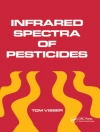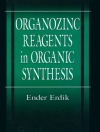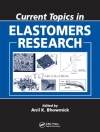Drug design is a complex, challenging and innovative research area. Structure-based molecular design has transformed the drug discovery approach in modern medicine. Traditionally, focus has been placed on computational, structural or synthetic methods only in isolation. This one-of-akind guide integrates all three skill sets for a complete picture of contemporary structure-based design.
This practical approach provides the tools to develop a high-affinity ligand with drug-like properties for a given drug target for which a high-resolution structure exists. The authors use numerous examples of recently developed drugs to present ’best practice’ methods in structurebased drug design with both newcomers and practicing researchers in mind. By way of a carefully balanced mix of theoretical background and case studies from medicinal chemistry applications, readers will quickly and efficiently master the basic skills of successful drug design.
This book is aimed at new and active medicinal chemists, biochemists, pharmacologists, natural product chemists and those working in drug discovery in the pharmaceutical industry. It is highly recommended as a desk reference to guide students in medicinal and chemical sciences as well as to aid researchers engaged in drug design today.
Innehållsförteckning
Preface xiii
1 From Traditional Medicine to Modern Drugs: Historical Perspective of Structure-Based Drug Design 1
1.1 Introduction 1
1.2 Drug Discovery During 1928–1980 1
1.3 The Beginning of Structure-Based Drug Design 6
1.4 Conclusions 12
References 13
Part One Concepts, Tools, Ligands, and Scaffolds for Structure-Based Design of Inhibitors 19
2 Design of Inhibitors of Aspartic Acid Proteases 21
2.1 Introduction 21
2.2 Design of Peptidomimetic Inhibitors of Aspartic Acid Proteases 22
2.3 Design of Statine-Based Inhibitors 24
2.4 Design of Hydroxyethylene Isostere-Based Inhibitors 29
2.5 Design of Inhibitors with Hydroxyethylamine Isosteres 35
2.5.1 Synthesis of Optically Active α-Aminoalkyl Epoxide 37
2.6 Design of (Hydroxyethyl)urea-Based Inhibitors 40
2.7 (Hydroxyethyl)sulfonamide-Based Inhibitors 42
2.8 Design of Heterocyclic/Nonpeptidomimetic Aspartic Acid Protease Inhibitors 42
2.8.1 Hydroxycoumarin- and Hydroxypyrone-Based Inhibitors 44
2.8.2 Design of Substituted Piperidine-Based Inhibitors 46
2.8.3 Design of Diaminopyrimidine-Based Inhibitors 50
2.8.4 Design of Acyl Guanidine-Based Inhibitors 51
2.8.5 Design of Aminopyridine-Based Inhibitors 53
2.8.6 Design of Aminoimidazole- and Aminohydantoin-Based Inhibitors 53
2.9 Conclusions 56
References 56
3 Design of Serine Protease Inhibitors 67
3.1 Introduction 67
3.2 Catalytic Mechanism of Serine Protease 67
3.3 Types of Serine Protease Inhibitors 67
3.4 Halomethyl Ketone-Based Inhibitors 69
3.5 Diphenyl Phosphonate-Based Inhibitors 70
3.6 Trifluoromethyl Ketone Based Inhibitors 73
3.6.1 Synthesis of Trifluoromethyl Ketones 76
3.7 Peptidyl Boronic Acid-Based Inhibitors 78
3.7.1 Synthesis of α-Aminoalkyl Boronic Acid Derivatives 83
3.8 Peptidyl α-Ketoamide- and α-Ketoheterocycle-Based Inhibitors 85
3.8.1 Synthesis of α-Ketoamide and α-Ketoheterocyclic Templates 90
3.9 Design of Serine Protease Inhibitors Based Upon Heterocycles 93
3.9.1 Isocoumarin-Derived Irreversible Inhibitors 94
3.9.2 β-Lactam-Derived Irreversible Inhibitors 95
3.10 Reversible/Noncovalent Inhibitors 97
3.11 Conclusions 104
References 105
4 Design of Proteasome Inhibitors 113
4.1 Introduction 113
4.2 Catalytic Mechanism of 20S Proteasome 113
4.3 Proteasome Inhibitors 114
4.3.1 Development of Boronate Proteasome Inhibitors 115
4.3.2 Development of β-Lactone Natural Product-Based Proteasome Inhibitors 116
4.3.3 Development of Epoxy Ketone-Derived Inhibitors 118
4.3.4 Noncovalent Proteasome Inhibitors 120
4.4 Synthesis of β-Lactone Scaffold 121
4.5 Synthesis of Epoxy Ketone Scaffold 123
4.6 Conclusions 126
References 126
5 Design of Cysteine Protease Inhibitors 131
5.1 Introduction 131
5.2 Development of Cysteine Protease Inhibitors with Michael Acceptors 132
5.3 Design of Noncovalent Cysteine Protease Inhibitors 136
5.4 Conclusions 140
References 140
6 Design of Metalloprotease Inhibitors 143
6.1 Introduction 143
6.2 Design of Matrix Metalloprotease Inhibitors 144
6.3 Design of Inhibitors of Tumor Necrosis Factor-α-Converting Enzymes 150
6.4 Conclusions 152
References 152
7 Structure-Based Design of Protein Kinase Inhibitors 155
7.1 Introduction 155
7.2 Active Site of Protein Kinases 155
7.3 Catalytic Mechanism of Protein Kinases 156
7.4 Design Strategy for Protein Kinase Inhibitors 156
7.5 Nature of Kinase Inhibitors Based upon Binding 160
7.5.1 Type I Kinase Inhibitors and Their Design 160
7.5.2 Type II Kinase Inhibitors and Their Design 164
7.5.3 Allosteric Kinase Inhibitors and Their Design 168
7.5.4 Covalent Kinase Inhibitors and Their Design 172
7.6 Conclusions 177
References 177
8 Protein X-Ray Crystallography in Structure-Based Drug Design 183
8.1 Introduction 183
8.2 Protein Expression and Purification 184
8.3 Synchrotron Radiation 185
8.4 Structural Biology in Fragment-Based Drug Design 186
8.5 Selected Examples of Fragment-Based Studies 187
8.6 Conclusions 196
References 197
9 Structure-Based Design Strategies for Targeting G-Protein-Coupled Receptors (GPCRs) 199
9.1 Introduction 199
9.2 High-Resolution Structures of GPCRs 200
9.3 Virtual Screening Applied to the β 2 -Adrenergic Receptor 201
9.4 Structure-Based Design of Adenosine A 2A Receptor Antagonists 204
9.5 Structure-Guided Design of CCR5 Antagonists 207
9.5.1 Development of Maraviroc from HTS Lead Molecules 207
9.5.2 Improvement of Antiviral Activity and Reduction of Cytochrome P450 Activity 208
9.5.3 Reduction of h ERG Activity and Optimization of Pharmacokinetic Profile 209
9.5.4 Other CCR5 Antagonists 213
9.6 Conclusion 213
References 213
Part Two Structure-Based Design of FDA-Approved Inhibitor Drugs and Drugs Undergoing Clinical Development 217
10 Angiotensin-Converting Enzyme Inhibitors for the Treatment of Hypertension: Design and Discovery of Captopril 219
10.1 Introduction 219
10.2 Design of Captopril: the First Clinically Approved Angiotensin-Converting Enzyme Inhibitor 220
10.3 Structure of Angiotensin-Converting Enzyme 225
10.4 Design of ACE Inhibitors Containing a Carboxylate as Zinc Binding Group 228
10.5 ACE Inhibitors Bearing Phosphorus-Based Zinc Binding Groups 231
10.5.1 Phosphonamidate-Based Inhibitors 232
10.5.2 Phosphonic and Phosphinic Acid Derivatives: the Path to Fosinopril 233
10.6 Conclusions 234
References 235
11 HIV-1 Protease Inhibitors for the Treatment of HIV Infection and AIDS: Design of Saquinavir, Indinavir, and Darunavir 237
11.1 Introduction 237
11.2 Structure of HIV Protease and Design of Peptidomimetic Inhibitors Containing Transition-State Isosteres 239
11.3 Saquinavir: the First Clinically Approved HIV-1 Protease Inhibitor 241
11.4 Indinavir: an HIV Protease Inhibitor Containing the Hydroxyethylene Transition-State Isostere 246
11.5 Design and Development of Darunavir 251
11.6 Design of Cyclic Ether Templates in Drug Discovery 252
11.7 Investigation of Cyclic Sulfones as P2 Ligands 255
11.8 Design of Bis-tetrahydrofuran and Other Bicyclic P2 Ligands 257
11.9 The “Backbone Binding Concept” to Combat Drug Resistance: Inhibitor Design Strategy Promoting Extensive Backbone Hydrogen Bonding from S2 to S2’ Subsites 259
11.10 Design of Darunavir and Other Inhibitors with Clinical Potential 263
11.11 Conclusions 266
References 266
12 Protein Kinase Inhibitor Drugs for Targeted Cancer Therapy: Design and Discovery of Imatinib, Nilotinib, Bafetinib, and Dasatinib 271
12.1 Introduction 271
12.2 Evolution of Kinase Inhibitors as Anticancer Agents 272
12.3 The Discovery of Imatinib 274
12.4 Imatinib: the Structural Basis of Selectivity 275
12.5 Pharmacological Profile and Clinical Development 278
12.6 Imatinib Resistance 279
12.7 Different Strategies for Combating Drug Resistance 279
12.7.1 Nilotinib and Bafetinib: Optimizing Drug–Target Interactions 279
12.7.2 Dasatinib: Binding to the Active Conformation (the First Example of Dual Abl/Src Inhibitors) 284
12.8 Conclusions 289
References 290
13 NS3/4A Serine Protease Inhibitors for the Treatment of HCV: Design and Discovery of Boceprevir and Telaprevir 295
13.1 Introduction 295
13.2 NS3/4A Structure 296
13.3 Mechanism of Peptide Hydrolysis by NS3/4A Serine Protease 299
13.4 Development of Mechanism-Based Inhibitors 300
13.5 Strategies for the Development of HCV NS3/4A Protease Inhibitors 303
13.6 Initial Studies toward the Development of Boceprevir 304
13.7 Reduction of Peptidic Character 308
13.8 Optimization of P 2 Interactions 309
13.9 Truncation Strategy: the Path to Discovery of Boceprevir 312
13.10 The Discovery of Telaprevir 314
13.11 Simultaneous P1, P1’ , P2, P3, and P4 Optimization Strategy: the Path to Discovery of Telaprevir 316
13.12 Conclusions 319
References 319
14 Proteasome Inhibitors for the Treatment of Relapsed Multiple Myeloma: Design and Discovery of Bortezomib and Carfilzomib 325
14.1 Introduction 325
14.2 Discovery of Bortezomib 326
14.3 Discovery of Carfilzomib 330
14.4 Conclusions 334
References 334
15 Development of Direct Thrombin Inhibitor, Dabigatran Etexilate, as an Anticoagulant Drug 337
15.1 Introduction 337
15.2 Coagulation Cascade and Anticoagulant Drugs 338
15.3 Anticoagulant Therapies 340
15.4 Structure of Thrombin 342
15.5 The Discovery of Dabigatran Etexilate 345
15.6 Conclusions 353
References 353
16 Non-Nucleoside HIV Reverse Transcriptase Inhibitors for the Treatment of HIV/AIDS: Design and Development of Etravirine and Rilpivirine 355
16.1 Introduction 355
16.2 Structure of the HIV Reverse Transcriptase 357
16.3 Discovery of Etravirine and Rilpivirine 360
16.4 Conclusions 368
References 370
17 Renin Inhibitor for the Treatment of Hypertension: Design and Discovery of Aliskiren 373
17.1 Introduction 373
17.2 Structure of Renin 373
17.3 Peptidic Inhibitors with Transition-State Isosteres 374
17.4 Peptidomimetic Inhibitors 376
17.5 Design of Peptidomimetic Inhibitors 380
17.6 Biological Properties of Aliskiren 393
17.7 Conclusions 393
References 394
18 Neuraminidase Inhibitors for the Treatment of Influenza: Design and Discovery of Zanamivir and Oseltamivir 397
18.1 Introduction 397
18.2 Discovery of Zanamivir 401
18.3 Discovery of Oseltamivir 403
18.4 Conclusions 407
References 408
19 Carbonic Anhydrase Inhibitors for the Treatment of Glaucoma: Design and Discovery of Dorzolamide 411
19.1 Introduction 411
19.2 Design and Discovery of Dorzolamide 412
19.3 Conclusions 418
References 418
20 β-Secretase Inhibitors for the Treatment of Alzheimer’s Disease: Preclinical and Clinical Inhibitors 421
20.1 Introduction 421
20.2 β-Secretase and Its X-Ray Structure 422
20.3 Development of First Peptidomimetic BACE Inhibitors 423
20.4 X-Ray Structure of Inhibitor-Bound BACE1 425
20.5 Design and Development of Selective Inhibitors 427
20.6 Design of Small-Molecule Inhibitors with Clinical Potential 431
20.7 GRL-8234 (18) Rescued Cognitive Decline in AD Mice 435
20.8 BACE1 Inhibitors for Clinical Development 436
20.8.1 Development of Clinical Inhibitor, AZD3839 436
20.8.2 Development of Iminopyrimidinone-Based BACE1 Inhibitors 440
20.9 Conclusions 443
References 444
Index 449
Om författaren
Arun K. Ghosh received his BS and MS in Chemistry at the University of Calcutta and the Indian Institute of Technology, Kanpur, respectively. He obtained his Ph.D. (1985) at the University of Pittsburgh. He then pursued post-doctoral research with Professor E. J. Corey at Harvard University (1985-1988). He was a research fellow at Merck Research Laboratories prior to joining the University of Illinois, Chicago as an assistant Professor in 1994. In 2005, he moved to Purdue University where he is currently the Ian P. Rothwell Distinguished Professor of Chemistry and Medicinal Chemistry. His notable honors include: ACS Medicinal Chemistry Hall of Fame, National Institutes of Health MERIT Award, CRSI medal from the Chemical Research Society of India, IUPAC Richter Award, ACS Arthur C. Cope Scholar Award, ACS Robert Scarborough Medicinal Chemistry Award, American Association for the Advancement of Science, University of Illinois University Scholar, National Merit Scholar of India. He has published over 260 research papers, edited a book on aspartic acid proteases and holds numerous patents. His research interests include diverse areas of organic, bioorganic, and medicinal chemistry with particular emphasis on organic synthesis and protein-structure-based design of biomolecules.
Sandra Gemma graduated cum Laude in Medicinal Chemistry at the School of Pharmacy of the University of Siena (1998) where she also received her Ph.D. degree (2003). She was a post-doctoral fellow at the Department of Chemistry of the University of Illinois at Chicago in Professor Ghosh’s laboratory (2004 to 2005). She then moved back to the University of Siena where she was appointed as an Assistant Professor at the Department of Biotechnology, Chemistry and Pharmacy (2006-present). She also visited the Department of Chemistry at Purdue University as a research assistant in the Ghosh group (2008 and 2012). In 2014, Dr. Gemma received the National scientific qualification for the role of Associate Professor. Her research activity is currently focused on the structure- and ligand-based design of therapeutic agents, anti-HIV and anti-Alzheimer therapeutics, ligands for GPCRs and ion channels, and antimalarial drugs. She has authored more than 65 papers and patents in these fields.












